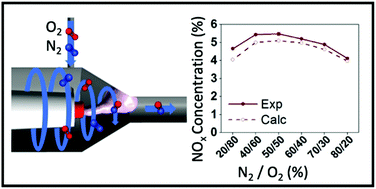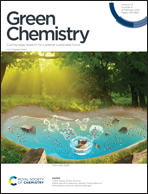NOx production in a rotating gliding arc plasma: potential avenue for sustainable nitrogen fixation†
Abstract
The fast growing world population demands food to survive, and nitrogen-based fertilizers are essential to ensure sufficient food production. Today, fertilizers are mainly produced from non-sustainable fossil fuels via the Haber–Bosch process, leading to serious environmental problems. We propose here a novel rotating gliding arc plasma, operating in air, for direct NOx production, which can yield high nitrogen content organic fertilizers without pollution associated with ammonia emission. We explored the efficiency of NOx production in a wide range of feed gas ratios, and for two arc modes: rotating and steady. When the arc is in steady mode, record-value NOx concentrations up to 5.5% are achieved which are 1.7 times higher than the maximum concentration obtained by the rotating arc mode, and with an energy consumption of 2.5 MJ mol−1 (or ca. 50 kW h kN−1); i.e. the lowest value so far achieved by atmospheric pressure plasma reactors. Computer modelling, using a combination of five different complementary approaches, provides a comprehensive picture of NOx formation in both arc modes; in particular, the higher NOx production in the steady arc mode is due to the combined thermal and vibrationally-promoted Zeldovich mechanisms.



 Please wait while we load your content...
Please wait while we load your content...